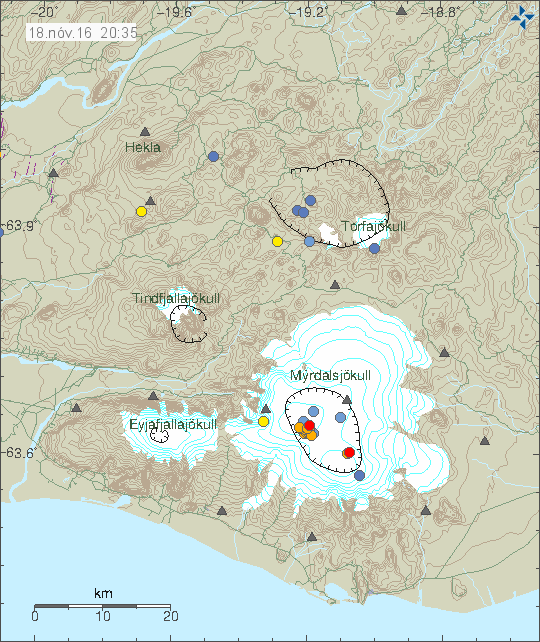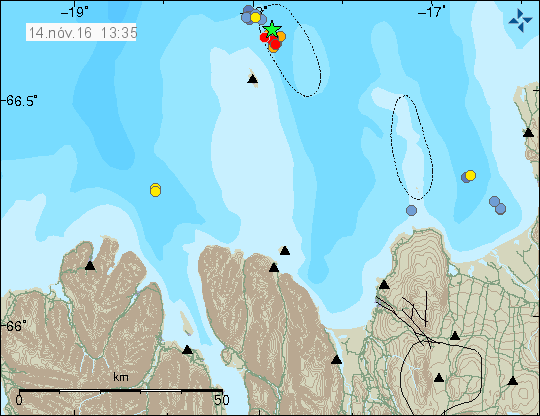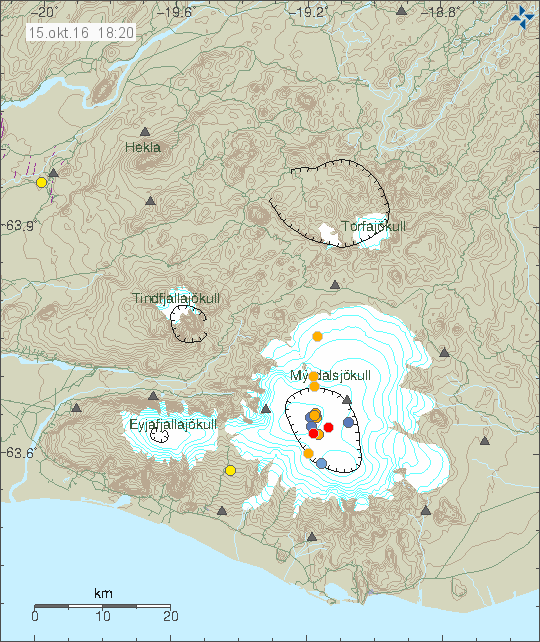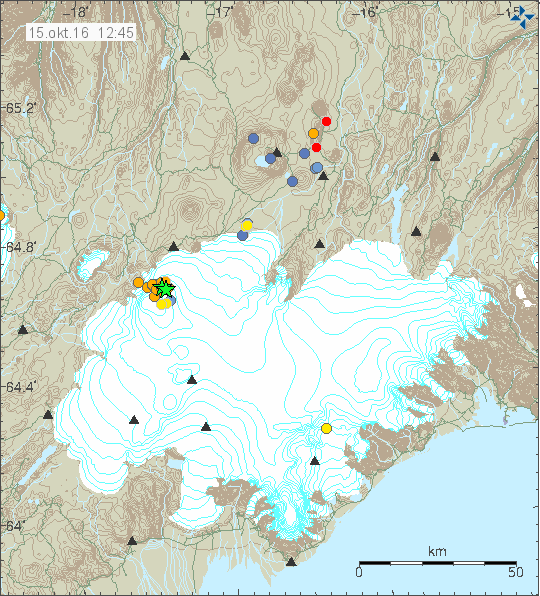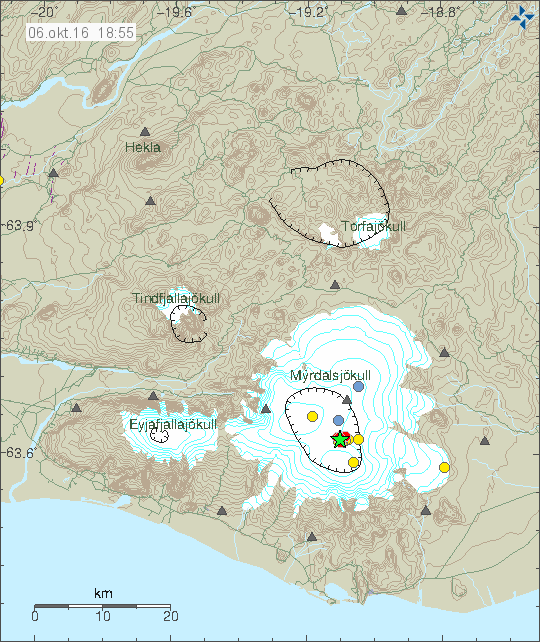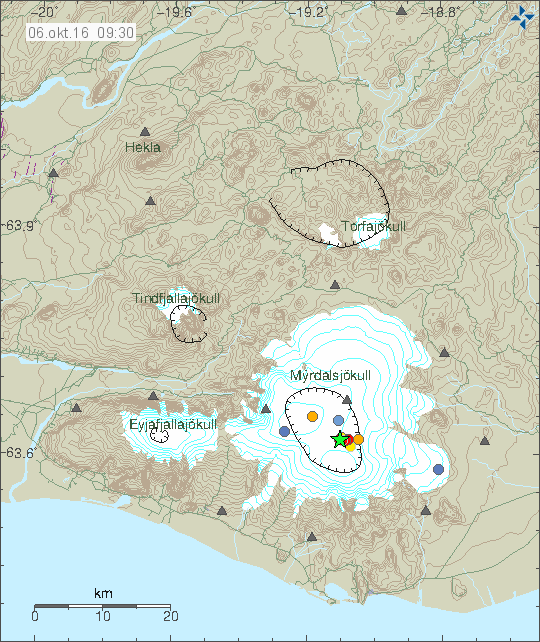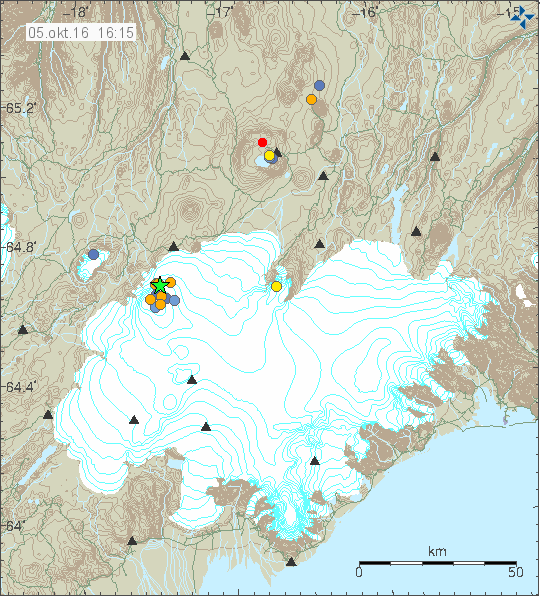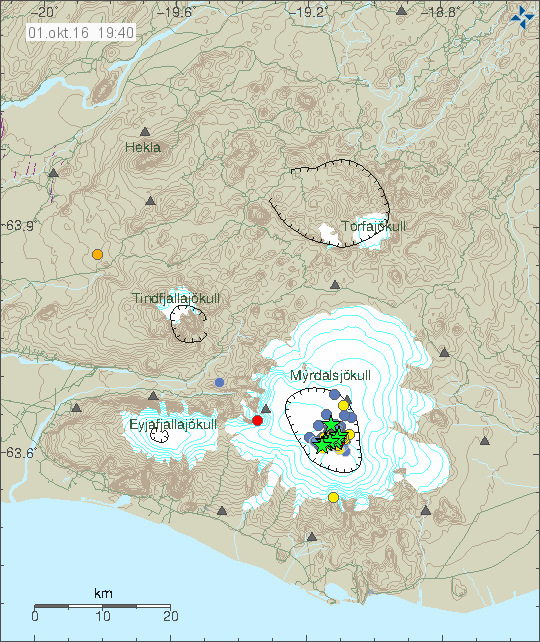This is a special report on the earthquake swarm in Italy. Due this being a different country I only have limited information about what is going on in Italy and I don’t have complete knowledge of the area in question. News sources with detailed images of the affected earthquake area can be found here (English) and here (Italian). Those news articles also contains images of the affected areas and aftershock areas (I can only use the image from USGS on the English website).
The earthquake swarm in Central Italy
On 26-October-2016 an earthquake swarm started in Italy, it started with a magnitude 5,5 earthquake (EMSC Information). It was followed by a magnitude 6,1 earthquake (EMSC Information). The magnitude 5,5 earthquake is a foreshock (Wikipedia information) to the magnitude 6,1 earthquake and that is the main event in that earthquake swarm. The magnitude 6,5 earthquake (EMSC Information) today (30-October-2016) is a new earthquake swarm in the same area. It has been followed by a heavy aftershock activity, with more than 300 earthquakes/h taking place in the main earthquake area. It is my view, based on the aftershock pattern that one or more magnitude 6,0 or stronger earthquakes are going to happen in this area in the next few days to months (it’s impossible to know when they happen). It does not help that this area of Italy is crossed with fault lines and they are all active (in the sense they can and do make earthquakes every few decades to hundreds of years).
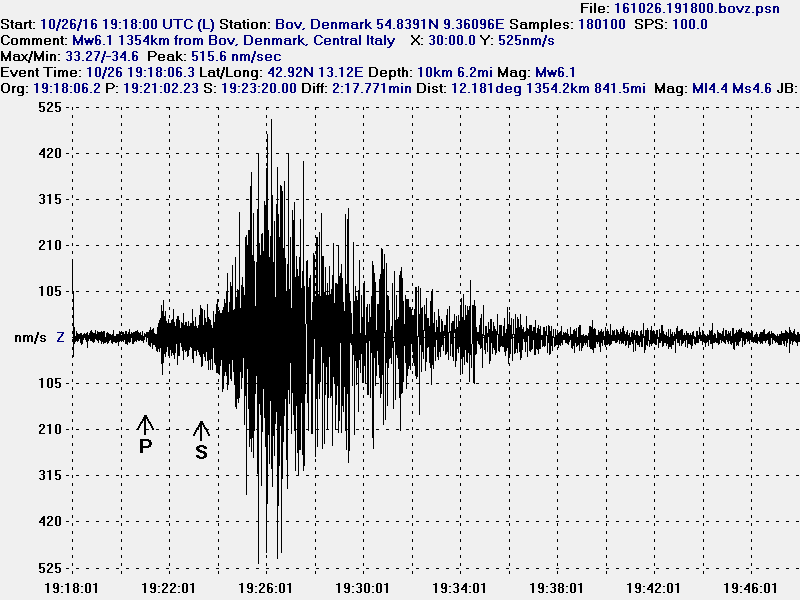
The magnitude 6,1 earthquake in Central Italy on 26-October-2016. This image is under Creative Commons Licence, please see CC Licence website for details.
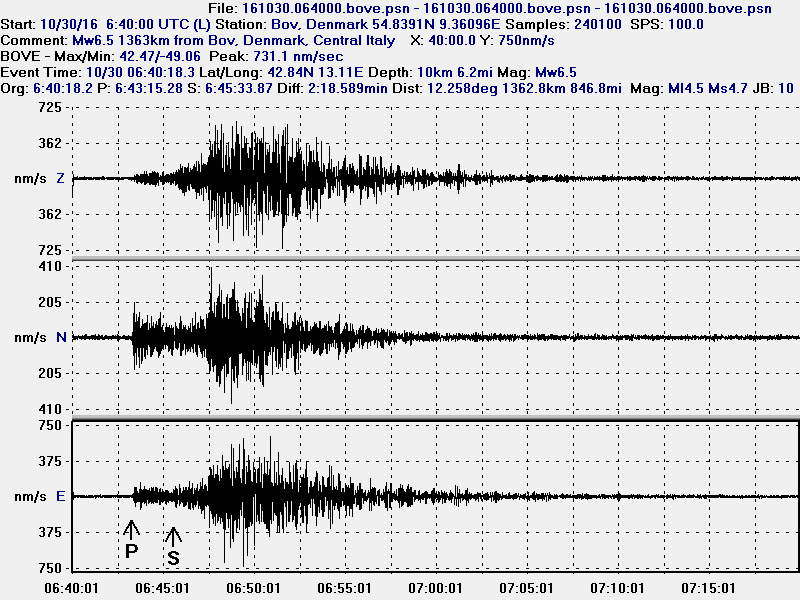
The magnitude 6,5 earthquake in Italy on all axes (Z, N-S, E-W). According to the measurement that I saw on my geophone in Denmark, the movement was N-S rather than E-W. There appears to have been some vertical displacement in this earthquake. This image is under Creative Commons Licence, please see CC Licence website for details.
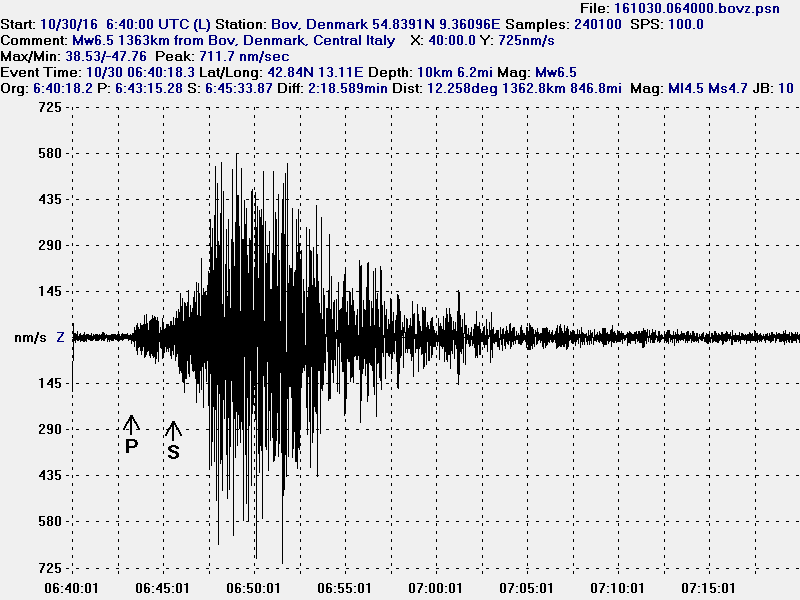
High resolution of the vertical component (Z) in my geophone. It clearly shows how the earthquake happened in central Italy. This image is under Creative Commons Licence, please see CC Licence website for details.
It is unclear how this is going to progress over the next few days, weeks and months. I don’t know enough about this area to make any type of guess. The area in question is a subduction zone (just not under a ocean) and that makes predicting this activity even more complicated and difficult.
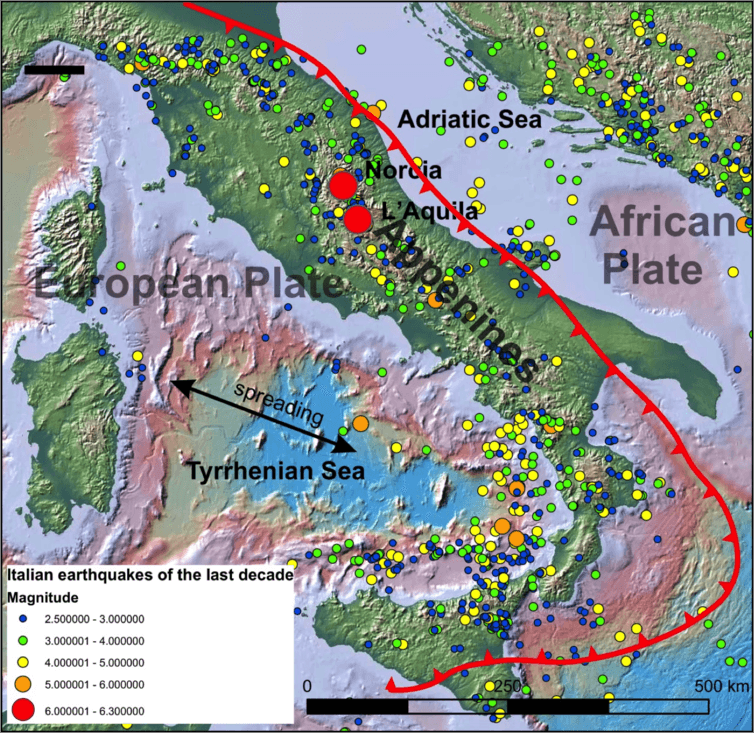
Basic tectonic layout of Italy with earthquake activity on top. Image is from USGS.
There is also a factor that I don’t know about. How often does this happens over the century in Italy. There is only a small clue (and it’s not even clear) of the earthquake list for Italy on Wikipedia (best that I was able to find). In Iceland (for comparison), the SISZ has an earthquake swarm activity (major) every 13 – 90 years (I wrote a list about known earthquakes here). I don’t know how often this happens in Italy, but I suspect that it is at least every few hundred years. How often this happens is mostly controlled by how fast the faults move each year and I don’t have that information.
If anything more happens in Italy I’m going to update this article.
Update on 01-November-2016 at 23:50 UTC
This morning (1-November-2016) a magnitude 4,9 earthquake (EMSC Information) took place in Central Italy. Aftershock activity continues to be heavy in Central Italy. While this earthquake doesn’t look big, it is enough to create more damage into the effected areas. Aftershock activity continues to be heavy in Central Italy.
Donations
Please remember to support my work with donations. I also want to point out that due to unusual bill situation I’m going to be rather broke in November at best, at worst I’m going to be completely broke (that might mean empty fridge). Thanks for the support. 🙂
Article updated at 23:19 UTC. Word fixes.
Article updated on 1-November-2016 at 23:52 UTC.
